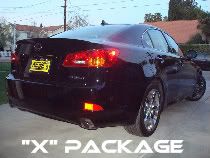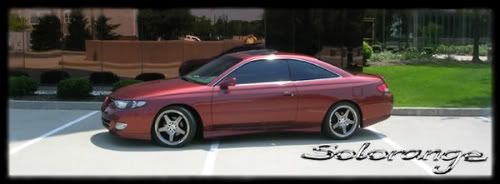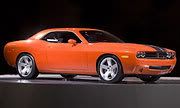Mandarinsolara wrote:ok here it goes:
there is 1 sensor i believe that picks up its readings after both headers have merged. i believe this is on the y pipe or shortly thereafter
unless you want to really spend some time splicing up a whole new wiring scheme and adding another sensor for your 'true dual' setup, your best bet is to merge the two exhaust routes again into an X-pipe, or an H-pipe. this will allow you to use that same 1 sensor to get a reading on the o2 levels.
difference between X & H pipes?
an H-pipe, usually resembles a perfect "H". the bar merging the two exhaust routes is perpindicular to the two exhaust pipes, so in the middle of your H pipe, you would weld a bung for your O2 sensor and have alright readings.
an X-pipe basicly uses the same technique but in the shape of an "X". it will flow better than the H pipe because the direction the exhaust travels in, is smoother. also there is theory that exhaust that has traveled through side 1 of the x pipe will cross over to the other side where the firing sequence of the cylinders will cause alternating low and hi pressure areas between both exhaust routes. this in turn will cause a vacuum effect on side 2 of the x-pipe where you will notice significant top end improvement.
if you want your engine to pull harder and harder to redline, then there is no doubt that a true dual setup with X-pipe is the way to go.
but from i can tell, most people on here are not willing to sacrifice our decent low end torque. they would rather go with a smaller/cheaper unit that maintains the back pressure of the exhaust and keeps the neighbors happy. but your potential hp will not be unlocked because the single units just dont flow as much for your top end pulls
another reason you dont see duals alot for us, is because the undercarriage is not designed to house dual exhaust, and makes the fabrication and installation of it difficult
dont take me the wrong way, im a fan of the aftermarket single xhaust setups. they have their class. but i say when you are doing exhaust, well damnit, you get you some exhaust

have a nice day
(and brad is a lazy poster

)

^^^ Couldn't have said it better. Great explaination.

Here is a article that builds on what Mandarinsolara was trying to say (below)vvv.
 LINK:
http://www.carcraft.com/techarticles/69238/
Article:
LINK:
http://www.carcraft.com/techarticles/69238/
Article:
H-Pipe, X-Pipe, 1, 2, 3...
An Exhaust System Based On A Universal X-Pipe Crossover And A Pair Of Stainless Steel Street Series Mufflers
By Matthew King
Photography: Matthew King
Do you really need an exhaust system on your car? That’s a good question. If you have neighbors, drive it on public streets anywhere there are cops, or race it on virtually any NHRA track in the country, the answer is probably yes. Will it cost you power compared to open headers? Although that answer is also frequently yes, it can be no with the right system.
We’ve been running open headers on our ’86 Mustang project car since day one because it was the easiest thing to do and it seemed cool. It was also brutally loud, but it did pass muster at our local track because Los Angeles County Raceway doesn’t enforce a 95-decibel rule or require mufflers like many “street-legal” drag programs do. However, we always wondered if the open headers were costing us a little low-end torque due to a lack of backpressure. To find the answer, we took the car to Magnaflow Performance Exhaust’s research and development center. After discussing our combination and the way the car is used (100 percent at the track), Magnaflow built a system based on its universal X-pipe crossover and a pair of its stainless steel street series mufflers.
For any performance exhaust system, some type of crossover connecting the two sides of a dual exhaust system is important because it acts to balance the two banks of the engine. The common H-style crossover is good at balancing sound pulses between the two halves, but does little to promote scavenging because the exhaust gases tend to follow the path of least resistance, which is straight through each pipe rather than taking the 90-degree turn through the H-pipe into the other half of the system. In an X-pipe system, however, where the two sides of the system intersect, the gasses have no choice but to intermingle as they pass through the junction. This promotes improved scavenging effects by smoothing out uneven exhaust pulses from the engine’s firing order. It also helps quiet down the exhaust, resulting in a mellower, less raspy tone. According to Magnaflow, the faster acceleration of the gasses through an X-pipe causes them to flow in a linear fashion parallel to the walls of the tubing rather than tumbling. This “laminar” flowing gas is much quieter than tumbling gas, resulting in an exhaust tone up to 8 decibels quieter than a traditional H-pipe.
We left the car at Magnaflow for about a week, and when we came back we found that after some preliminary testing, the guys had built a really trick system consisting of 2-½-inch tubing from the header collectors into the X-pipe, 3-inch out of the X flaring into 3½-inch tubing running for about 26 inches before necking back down into a pair of 3-inch mufflers with turn-downs. The theory behind this design is that it will keep the velocity of the exhaust gases moving quickly through the headers into the X-pipe to maximize the scavenging effect, while the larger-diameter tubing ahead of the mufflers prevents the gasses from stacking up as they pass through the mufflers to avoid excessive backpressure in the system.
Sounds good, but would it work? To find out, we tested three exhaust-system configurations on Magnaflow’s in-house Dynojet. For a baseline, we ran the car with open headers and saw 333 hp at 6,300 rpm and 304 lb-ft of torque at 5,200 at the rear wheels. Next, we ran a 2-½-inch bolt-together system consisting of a BBK short off-road H-pipe designed to fit the company’s full-length headers connected to a set of race-type 2-½-inch welded mufflers with turndowns. Our Mustang’s carbureted 302 didn’t like this combo, as power fell to 323 hp at 6,300 rpm and 295 lb-ft of torque at 5,200. The increased backpressure also richened up the air/fuel mixture by about two carburetor jet sizes.
Finally, we swapped on the stepped X-pipe setup and were impressed to see power levels equal to the open headers: 335 hp at 6,300 hp and 302 lb-ft at 5,200. That’s a gain of 12 rear-wheel horsepower, although it turns out we weren’t really giving anything up or gaining anything extra from the open headers. So the car’s happy, and our ears are even happier!













